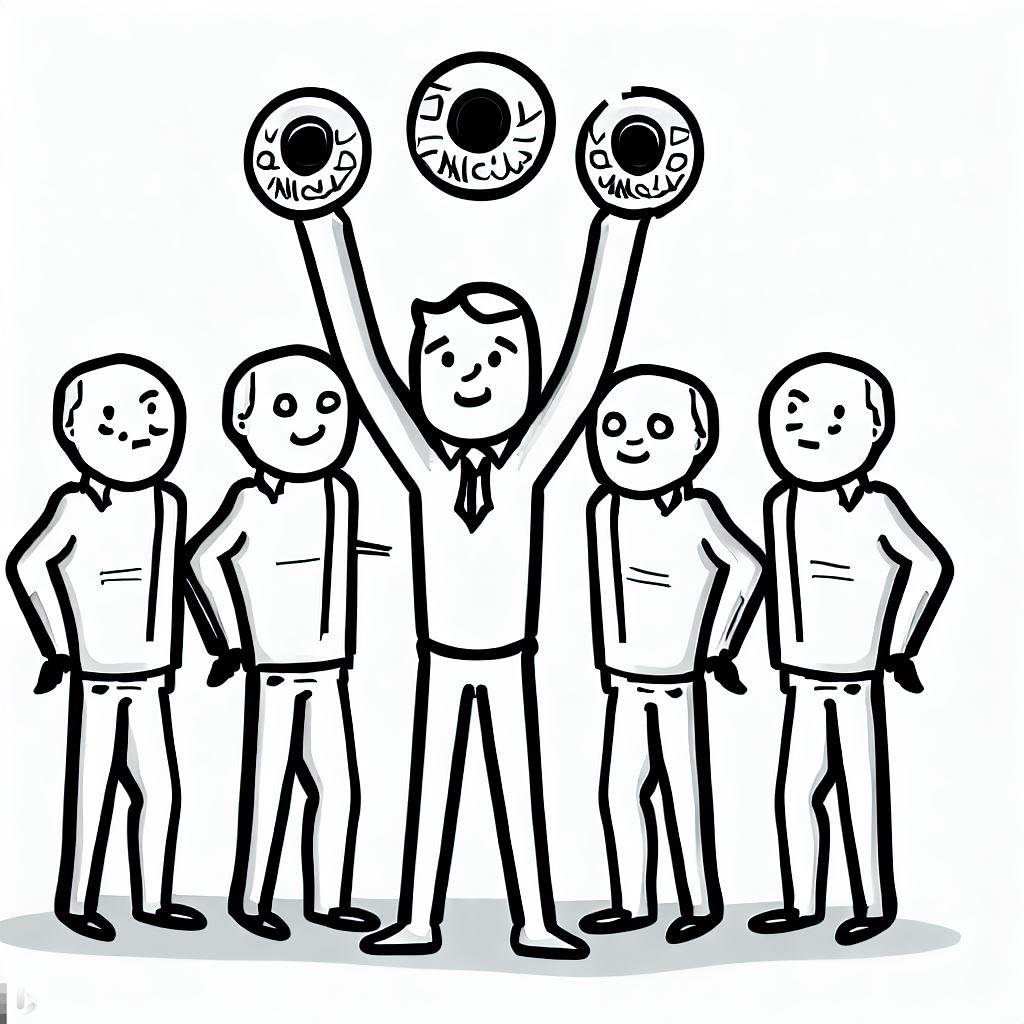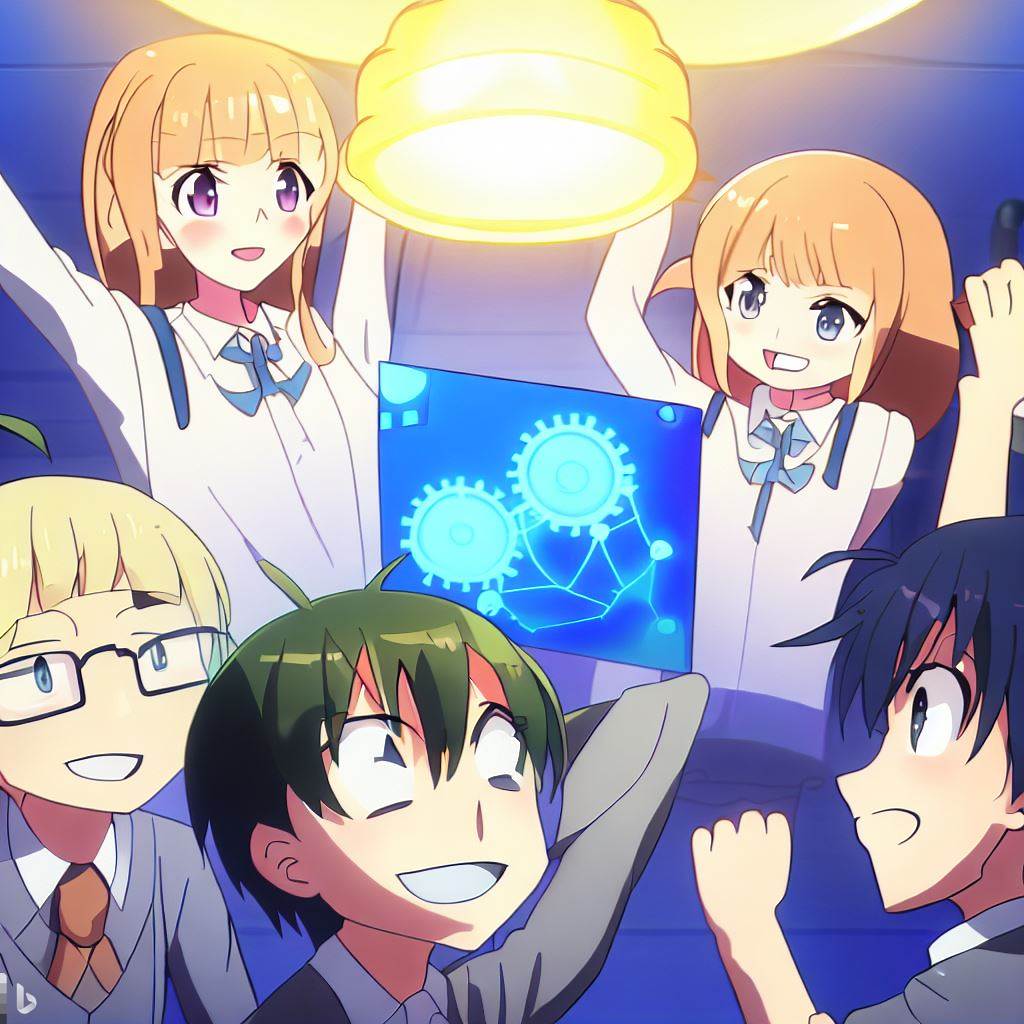What makes collaboration successful? By building trust, aligning strengths, resolving disputes, and embracing technology, teams can achieve shared goals through purposeful teamwork.
With good communication, leadership, and performance tracking, collaborators can maximize complementary contributions for greater collective success.
Key Takeaways:
- Collaboration is successful with trust, open communication, and constructive conflict resolution generate candid and creative collaborations.
- For maximum collaboration, define a shared purpose, play to team strengths, and adopt helpful technology amplify alignment and productivity.
- Leading by empowering example and measuring performance drive ongoing improvement improves collaboration

1. How can you build trust between collaborators?
Trust is the foundation for any successful collaboration. When team members trust each other, they are more willing to communicate openly, take risks, and work effectively together. Here are some ways to build trust in a collaborative environment:
- Set clear expectations. Make sure everyone understands their roles, responsibilities, and the objectives of the collaboration. Unclear expectations lead to confusion and mistrust.
- Encourage vulnerability. Team members should feel comfortable admitting mistakes, asking for help, and providing constructive feedback. This creates a sense of mutual support.
- Practice active listening. Give team members your full attention when they speak and validate their perspectives. This makes people feel heard and valued.
- Deliver on commitments. Do what you say you will do, when you say you will do it. Following through reliably builds credibility.
- Give regular feedback. Provide regular positive feedback when deserved and constructive criticism when necessary. This enables growth.
- Keep information open. Avoid hidden agendas by being transparent about your availability, challenges, and blockers. Sharing information builds trust.
- Align words and actions. Walk your talk. If there are inconsistencies between your words and actions, trust erodes quickly.
- Show appreciation. Recognize people’s contributions and express gratitude. Appreciation builds goodwill and strong relationships.
- Don’t assign blame. When problems arise, avoid finger-pointing. Analyze objectively what went wrong and focus on preventing recurrences.
- Build social capital. Take time for informal interactions to get to know each other. Personal connections generate trust.
Trust allows teams to have candid debates, engage in creative problem-solving, and then align behind decisions. Nurturing trust is essential for collaborators to work through tensions and challenges.

2. What communication strategies lead to successful collaboration?
Clear and open communication is vital for an effective collaboration. Teams that communicate well are more coordinated, united, and productive. Here are some key strategies for good communication in a collaborative environment:
- Set regular meetings. Have recurring meetings for status updates, brainstorming, and making decisions. Consistent touchpoints keep everyone aligned.
- Clarify roles. Ensure each person understands their responsibilities and who they need to collaborate with. This enables efficient teamwork.
- Document discussions. Take notes during meetings and summarize conclusions over email to prevent misinterpretations. Written records keep everyone on the same page.
- Provide context. Explain the background and constraints behind requests so people understand the full picture. This leads to better solutions.
- Listen actively. Avoid interrupting. Ask clarifying questions. Paraphrase what you hear. Active listening leads to mutual understanding.
- Give timely feedback. Provide regular input, both positive and constructive, so corrections can occur early. Early feedback improves outcomes.
- Communicate challenges. Surface blockers, dependencies, and risks as soon as they arise so the team can troubleshoot them together. Transparency enables adaptation.
- Use collaboration technology. Tools like Slack, Trello, and Google Docs connect team conversations and work products. This enhances coordination.
- Tailor information. Filter and format information so it is concise, relevant, and understandable to each recipient. This ensures engagement.
- Establish escalation paths. Define processes to resolve disputes and who to turn to when communication breaks down. This reopens dialogue.
With intentional communication strategies, collaborators can share knowledge, discuss ideas, provide feedback, and make decisions together. This drives progress and innovation.

3. How do you align individual and team goals?
Aligning individual and team goals is crucial for collaborative success. Misalignments lead to inefficient activities, frustration, and failure. Here are some tips for getting individual goals in sync with team goals:
- Make goals transparent. Everyone should understand individual responsibilities, team objectives, and organizational goals. Transparency enables alignment.
- Identify interdependencies. Map out how each person’s work feeds into the whole. Showcasing interconnections motivates teamwork.
- Define success metrics. Determine quantifiable targets for both individual and team performance. Well-defined metrics facilitate progress tracking.
- Communicate “why”. Explain the rationale behind team goals so individuals understand the bigger picture. Purpose breeds commitment.
- Allow individual contributions. Provide outlets for each person to contribute meaningfully based on their strengths. This boosts engagement.
- Develop shared language. Use common terminology around goals and priorities. Shared language unifies perspectives.
- Highlight impact. Remind individuals how their work is instrumental for group success. Seeing impact is fulfilling.
- Resolve conflicts. Address tensions between team and individual goals openly. Compromise produces cohesion.
- Adjust as needed. Review progress regularly and recalibrate goals if necessary. Flexibility enables responsiveness.
- Reward team results. Recognize both individual and collective achievements. Celebrating team success motivates alignment.
Synergy comes from harnessing individual talents to advance team goals. Alignment allows collaborators to maximize unique contributions while working purposefully together.

4. How do you resolve conflicts constructively?
Conflicts are inevitable when collaborating. Different perspectives can lead to productive debate or destructive disputes. Effective conflict resolution converts tensions into mutual understanding. Here are constructive approaches:
- Address issues early. Tackle disagreements proactively before positions harden and emotions intensify. Nip conflicts in the bud.
- Focus on interests. Explore underlying motivations driving each viewpoint. Understanding interests makes compromise easier.
- Find common ground. Recognize shared goals and use these as the foundation for resolving differences. Commonality breeds cooperation.
- Brainstorm alternatives. Generate multiple solutions to expand possibilities. Creativity enables win-win outcomes.
- Be open-minded. Really listen to opposing views with curiosity. There are usually valid concerns on both sides of an argument.
- Clarify reasoning. Explain the rationale behind recommendations. Insight into thinking builds understanding.
- Establish processes. Put structured processes in place for managing conflicts productively when they arise. Organization enables objectivity.
- Look forward. After resolving a dispute, shift attention to the future and how to avoid recurrence. Learning prevents repeat conflicts.
- Forgive mistakes. Accept that people will not always agree perfectly. Focus on good intentions. Forgiveness preserves relationships.
With constructive conflict resolution, collaboration becomes an inclusive process of reaching better solutions. Discussing differences respectfully brings out everyone’s best thinking.

5. How can you foster innovation through collaboration?
Innovation often emerges when people work creatively together. Collaboration exposes individuals to diverse ideas, leadership and other skillsets, and experiences. This sparks fresh thinking. Here are some ways to promote collaborative innovation:
- Assemble diverse teams. Include people with wide-ranging backgrounds and expertise. Diversity breeding innovation.
- Cultivate trust. Build relationships where team members feel safe to share wild ideas and take risks. Psychological safety enables creativity.
- Define the challenge. Frame the innovation task or opportunity in an inspiring way. Meaningful challenges motivate breakthroughs.
- Brainstorm together. Host collaborative ideation sessions to generate solutions. Building on others’ ideas spawns new connections.
- Encourage debate. Have open and candid discussions to stress test concepts. Constructive debate evolves good ideas into great ones.
- Prototype rapidly. Transform ideas quickly into low-fidelity prototypes to elicit feedback. Rapid prototyping accelerates learning.
- Allow free tinkering. Provide space for unstructured exploration outside formal constraints. Tinkering time gives creative breakthroughs room to emerge.
- Support experimentation. View every idea and iteration as an experiment. This reduces the fear of failure.
- Incentivize contributions. Recognize and reward collaborative efforts, not just successful outcomes. This motivates participation.
- Share results openly. Transparently communicate insights across the organization. Cross-pollinating ideas enhances innovation.
With intentional culture and practices, collaboration can become an engine for creativity and progress. The synergy of diverse minds drives impactful innovation.

6. What makes a good team leader for collaboration?
An effective team leader is essential for bringing out the best in collaborators. They set the tone and shape the environment to unlock the group’s potential. Here are hallmarks of great collaborative leadership:
- Facilitates communication. Makes sure information, feedback, and ideas flow freely between members. Open communication is foundational.
- Cultivates trust. Fosters relationships where team members feel respected, valued, and comfortable taking risks. Psychological safety promotes engagement.
- Defines shared purpose. Articulates a compelling vision that provides direction and inspires teamwork. Alignment around purpose creates focus.
- Leverages strengths. Assesses individual strengths and tailors responsibilities accordingly. Playing to strengths increases productivity.
- Manages conflicts. Surfaces and resolves disagreements before they disrupt team dynamics. Skilled conflict management maintains cohesion.
- Encourages diversity. Values diverse backgrounds and perspectives. Draws out unique insights from each member. Diversity powers innovation.
- Empowers others. Removes barriers team members face and provides support to enable their success. Empowerment drives ownership.
- Provides feedback. Delivers frequent, constructive feedback to help members continuously improve. Ongoing feedback enables growth.
- Leads by example. Models the behaviors they want to see from the team like accountability, positivity, and clear communication. Example is powerful.
- Celebrates wins. Recognizes contributions from individuals and the entire team. Appreciation uplifts and unites.
Exceptional leaders of collaboration maximize synergies across diverse individuals to accomplish shared goals. They unite, empower, and inspire.

7. How do you maximize strengths and minimize weaknesses in a team?
Aligning collaborators’ strengths and weaknesses enables teams to do their best collective work. Each member has unique capabilities to leverage and limitations to accommodate. Here are some tactics:
- Assess team composition. Have members complete skills and personality assessments. Understanding intrinsic attributes allows optimal role allocation.
- Map skills to tasks. Match assignments to members’ strengths as far as possible. This plays to natural capabilities.
- Cross-train selectively. Identify skills gaps and provide targeted training to broaden competencies where needed. Filling holes raises collective capability.
- Establish mentoring. Pair those with particular strengths as mentors to others who need development in those areas. Mentorship transfers skills.
- Define processes clearly. Put structures in place to guide execution, particularly in team members’ areas of weakness. Process boosts consistency.
- Set up check-ins. Implement regular touch points to inspect work products and provide early feedback. Checking work prevents quality lapses.
- Automate if possible. Use technology and tools to facilitate repetitive tasks that are challenging for the team. Automation offloads weakness.
- Outsource as needed. If there are significant team skill gaps, engage external specialists. Outsourcing fills voids.
- Highlight achievements. Recognize individual and team successes to reinforce strengths while deemphasizing shortcomings. Praise motivates.
Capitalizing on collaborative strengths while proactively addressing weaknesses leads to stellar outcomes. A diversity of competencies makes teams more resilient and complete.

8. How do you develop shared purpose and vision?
A compelling common purpose and vision give collaborators direction and motivation to align their efforts. Without a north star to guide choices, work fragments easily. Here are some ways to establish shared purpose:
- Clarify objectives. Distill the collaborative endeavor into a succinct and inspirational goal statement. A clear objective provides focus.
- Define shared values. Articulate the core values all members hold in common. Values form the foundation for purposeful action.
- Describe the why. Explain why the vision is meaningful and how it links to collaborators’ intrinsic motivations. Purpose breeds commitment.
- Paint the big picture. Help members see how they fit into the broader vision and contribute to its achievement. Feeling connected to something bigger is fulfilling.
- Make it visual. Translate the vision into compelling visuals, videos, or presentations. Visuals engage teams emotionally and drive momentum.
- Share success stories. Highlight examples where the vision is already coming to life. Success stories make the vision tangible.
- Establish milestones. Break the vision into measurable targets and celebrate when milestones are reached. Milestone momentum motivates.
- Revisit regularly. Refer back frequently to the agreed upon purpose and vision. Repetition cements them in collaborators’ minds and hearts.
- Adjust as needed. If priorities evolve, redefine aspects of the purpose and vision with team input. Adaptability maintains alignment.
With a jointly owned vision, collaborators have a shared roadmap to direct their complementary efforts toward impactful outcomes. Purpose and vision unite.

9. How do you enhance collaboration through technology?
Technology provides invaluable tools to connect collaborators, exchange ideas, co-create content, and track progress. Digital solutions make coordinating work easier and amplify team productivity. Here are some collaboration tech best practices:
- Use cloud-based documents. Google Docs, Office 365, and Dropbox allow multiple people to seamlessly edit files together in real time. Cloud docs enable fluid teamwork.
- Take advantage of project management tools. Trello, Asana, JIRA and others provide kanban boards, workflows, reminders, and progress dashboards to organize collaborative work. PM software boosts transparency.
- Establish centralized communication. Slack, Microsoft Teams, and Chatter offer instant messaging, video conferencing, and file sharing to streamline team conversations. Central hubs prevent silos.
- Select multipurpose platforms. Tools like Workplace by Facebook, Hive, and Smartsheet combine document editing, messaging, task management, and automation in one integrated solution. Consolidation enhances convenience.
- Build knowledge repositories. Wikis, Quip, Google Drive, and Confluence enable capturing, organizing, and sharing information across the team. Repositories reduce redundant work.
- Automate workflows. Zapier, IFTTT, and Microsoft Power Automate connect apps to auto-trigger actions like notifications, file backups, and data syncs. Automation saves time.
- Go paperless. Share notes via cloud services rather than printing handouts. Digital documents are accessible anywhere and searchable. Paperless is efficient.
- Train on adoption. Provide tutorials and support to help collaborators fully utilize chosen tools. Proper adoption unlocks the value of technology investments.
With the right collaborative tech in place, teams can seamlessly co-create, communicate, stay aligned, and generate results. Digital platforms enable innovative and productive teamwork.

10. How do you measure the success of a collaboration?
It is important to assess the effectiveness of collaboration through concrete metrics. This provides insight into what is working well and where improvements are needed. Here are some key ways to measure collaborative success:
- Quantify business impact – Track how collaboration affects key performance indicators like revenue, costs, and customer satisfaction. Hard measures indicate real-world value.
- Evaluate work output – Assess the productivity of collaborative efforts based on metrics like projects completed, problems solved, and product quality. Output reflects execution efficiency.
- Survey team members – Gather regular feedback from collaborators on satisfaction, team dynamics, communication, and other qualitative factors. Perception metrics matter.
- Review goal achievement – Determine the degree to which collaborative teams meet their objectives. Goal progress demonstrates alignment and execution abilities.
- Observe team interactions – Assess the quality of team meetings, discussions, and work sessions. The process reveals cooperation effectiveness.
- Analyze work products – Audit deliverables for characteristics like creativity, accuracy, and complexity. The fruits reflect the functioning of the group.
- Calculate cost vs. value – Weigh investments of time and resources against tangible collaboration outcomes. Efficiency indicates sustainability.
- Monitor technology use – Examine how well tools are adopted and if they enhance team interactions. Tech utilization reveals enabling support.
- Spot improvement areas – Identify issues that arise around communication, coordination, or team cohesion. Self-correction is a sign of maturity.
Evaluating collaborations from multiple angles provides a comprehensive picture of health and performance. Thoughtful measurement enables continual optimization.
Conclusion
What makes a collaboration successful? When done right, collaboration unlocks the potential for individuals to accomplish exponentially more by working together than they could on their own. By bringing together people with diverse perspectives, complementary abilities, and a shared vision, teams can tackle challenges and achieve outcomes far beyond the sum of their parts.
However, realizing this synergistic promise requires intention and effort. Laying a foundation of trust, coordinating through clear communication, optimizing strengths, and embracing the right technology sets the stage for impactful collaboration.
Resolving conflicts constructively when they inevitably arise and providing empowering leadership prevent derailment. And consistently evaluating performance against goals leads to continual improvement.
With these pillars in place, successful collaborators can build bonds, align contributions, and multiply their talents to drive positive change.
FAQ For What Makes Collaboration Successful?
Q: How can you build strong relationships between collaborators?
A: Trust is fundamental. Set clear expectations, encourage vulnerability, practice active listening, deliver on commitments, provide regular feedback, and avoid assigning blame. Building personal connections and social capital also nurtures trust.
Q: What communication strategies facilitate effective collaboration?
A: Have regular meetings to align the team. Document discussions and provide context so everyone is on the same page. Listen actively, give timely feedback, and proactively surface challenges. Tailor and streamline information sharing.
Q: How do you get people’s individual goals to align with the team’s goals?
A. Make all goals transparent. Highlight interdependencies between roles. Define shared success metrics. Explain the bigger purpose. Allow individual contributions. Use common language and highlight impact. Adjust goals as needed and reward team results.
Q: How can you resolve team conflicts in a healthy way?
A: Address issues early before positions harden. Understand underlying interests of both sides. Find common ground and brainstorm alternatives. Remain open-minded. Explain reasoning behind stances. Institute structured conflict resolution processes.
Q: What leadership behaviors foster collaborative innovation?
A: Assemble diverse teams. Cultivate psychological safety. Frame challenges meaningfully. Facilitate collaborative ideation and constructive debate. Support rapid prototyping and experimentation. Incentivize contributions over outcomes. Celebrate insights openly.
Q: How do you optimize team composition?
A: Assess individual strengths and weaknesses. Align responsibilities accordingly. Cross-train to fill gaps selectively. Set up mentoring and check-ins. Automate if possible. Outsource as needed. Recognize achievements.
Q: What technologies enhance team collaboration?
A: Use cloud docs such as Google docs or OneDrive for real-time editing. Adopt project management and team chat tools. Build knowledge repositories. Automate workflows. Go paperless. Provide training on new tools. Digital connectivity streamlines coordination.

